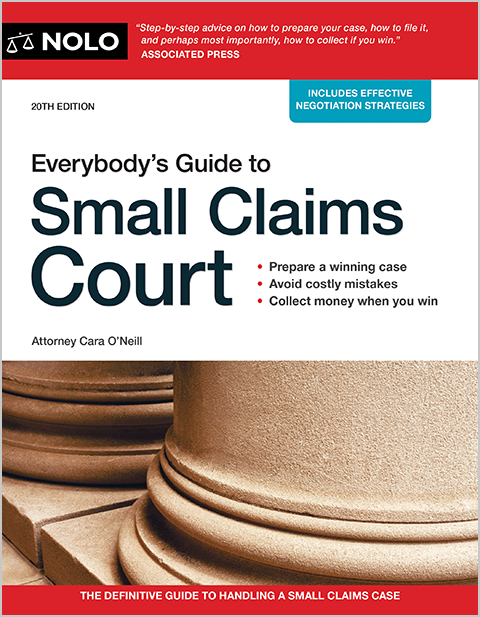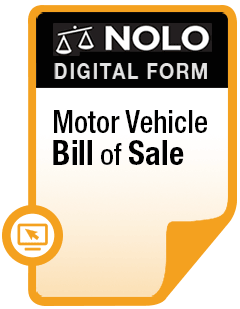Bars, restaurants, and liquor stores may be on the legal hook after an alcohol-related accident. Find out how dram shop laws make them legally responsible for the harm caused by a drunk customer.
Dram shop laws—so named because alcohol used to be sold by a unit of measurement called a "dram"—are state statutes that make sellers of alcohol legally responsible for injuries caused by their intoxicated customers. Most states have some version of a dram shop law. As a rule, these laws impose liability only when a "liquor licensee" (described below) furnishes alcohol illegally or under recklessly unsafe circumstances.
We'll discuss the different kinds of dram shop laws, including how they work, who can sue, who can be sued, and why it can be difficult to win a dram shop case.
Why Do Dram Shop Laws Exist?
Before dram shop laws were passed, states generally prohibited lawsuits against liquor sellers resulting from the actions of their drunk customers. Why? Courts and legislatures reasoned that it's the drinking of alcohol—not providing it—that causes alcohol-related accidents. In states that don't have dram shop laws, this continues to be the rule.
While this reasoning has some superficial appeal, it often left drunk driving accident victims without any meaningful legal relief. The drunk drivers who hurt them frequently were uninsured or underinsured. Absent a legal claim against a blameworthy seller, people hurt through no fault of their own were left with no compensation for their injuries. Concerns like these prompted states to enact dram shop laws.
How Do Dram Shop Laws Work?
Dram shop laws differ from one state to the next. But there are some common themes that many state laws share. For instance, most dram shop laws impose liability when a liquor licensee provides alcohol to a person who is:
- younger than the legal drinking age of 21, or
- visibly or obviously intoxicated.
Who Can I Sue?
Dram shop laws typically apply to liquor licensees. A licensee is any person or business licensed by the state to sell or furnish alcohol. The term includes bars, lounges, restaurants, liquor stores, and other retail liquor sellers. It also refers to employees like bartenders and wait staff, whose misconduct can be imputed to the licensee.
Serving Both Underage or Intoxicated People
Here are some of the states that impose liability for furnishing alcohol to people who are either underage, visibly intoxicated, or both:
- Alaska (see Alaska Stat. § 4.21.020 (2023))
- Arizona (see Ariz. Rev. Stat. § 4-311 (2023))
- Arkansas (see Ark. Code §§ 16-126-103 (2023) (sale to minors); 16-126-104 (2023) (sale to clearly intoxicated persons))
- Colorado (see Colo. Rev. Stat. § 44-3-801(3) (2023)),and
- Georgia (see Ga. Code § 51-1-40(b) (2023)).
Serving Either Underage or Intoxicated People
Dram shop laws in some states impose liability under just one or the other of these two circumstances. For example, several states impose dram shop liability for serving a person who's already drunk, but not for serving underage drinkers. These states include:
- Connecticut (see Conn. Gen. Stat. § 30-102 (2023))
- Indiana (see Ind. Code § 7.1-5-10-15.5 (2023)), and
- Iowa (see Iowa Code § 123.92.1.a (2023)).
Other Approaches
California takes another approach. Dram shop liability attaches where a seller provides alcohol to a visibly intoxicated underage person. (See Cal. Bus. & Prof. Code § 25602.1 (2023).)
At the other end of the spectrum are states where simply furnishing alcohol, without more, can give rise to dram shop liability. In Illinois, for instance, an injured person can sue a liquor licensee for providing alcohol to someone who later causes an accident. Liability arises simply from furnishing the alcohol, regardless of whether the liquor licensee furnished it to a drunk or underage drinker. (See 235 Ill. Comp. Stat. § 5/6-21 (2023).)
No Dram Shop Liability
Finally, there are a few states that don't recognize dram shop liability at all. In other words, injured parties are prohibited from seeking damages from a licensee who sold or served the alcohol. Examples include:
- Delaware. Delaware doesn't have a dram shop law. Several Delaware court cases have refused to impose dram shop liability absent a statute passed by the legislature. See, for example, Shea v. Matassa, 918 A.2d 1090 (Del. 2007).
- Kansas. In Ling v. Jan's Liquors, 237 Kan. 629, 635 (1985), the Kansas Supreme Court found that Kansas has no dram shop law, and that Kansas courts have refused to judicially impose dram shop liability.
- South Dakota. The state legislature has decided that drinking alcoholic beverages, not selling them, is the cause of any injuries inflicted by someone who's intoxicated. (S.D. Codified Laws § 35-11-1 (2023).) South Dakota law specifically rejects dram shop liability. (S.D. Codified Laws § 35-4-78 (2023).)
Who Can Sue Under Dram Shop Laws?
As a rule—and with one fairly typical exception—anyone injured by a drunk person who was furnished alcohol in violation of the state's dram shop law can sue for damages. When the injured person dies because of their injuries, their surviving relatives or estate can file a wrongful death lawsuit.
What's the exception? In most dram shop states, the drunk driver (or their surviving relatives or estate) can't sue whoever furnished the alcohol. Some states allow a dram shop suit by a minor who was furnished alcohol.
Special Rules in Dram Shop Cases
Quite often, states that allow dram shop liability impose special rules and limitations on dram shop cases.
Damage caps. A number of states limit the damages that can be collected from a licensee who violated the state's dram shop law. For example, in cases not involving significant injuries or death, Iowa limits "noneconomic" damages for injuries like pain and suffering and emotional distress to $250,000. (Iowa Code § 123.92.1.c (2023).) Connecticut caps all dram shop damages at $250,000. Utah's dram shop law bars recovery of punitive damages. (Utah Code § 32B-15-201 (2023).)
Notice and other procedural requirements. States sometimes impose notice and other requirements on a person who wants to bring a dram shop case. In Tennessee, for instance, the plaintiff (the party filing the dram shop case) must establish the statutory dram shop elements "beyond a reasonable doubt," an extremely high standard of proof usually reserved for criminal cases. (See Tenn. Code § 57-10-102 (2023).)
Oregon's dram shop act requires that the plaintiff give notice of their intent to sue a "defendant"—the licensee who they claim violated the law. If the injuries result in death, notice must be given within one year from the date of death. For any other injuries, notice is required within 180 days after the date of injury. (See Or. Rev. Stat. § 471.565(3) (2023).)
How Hard Is it to Prove a Dram Shop Claim?
Putting aside the special rules that often apply, dram shop cases can be difficult to win. Given a choice between two bad actors—a drunk driver who caused injury or death and the liquor licensee who served them the alcohol—juries naturally tend to find the most fault with the drunk driver. It's the same reasoning many states use to deny dram shop liability in the first place.
Liquor licensees must carry liability insurance (some states call it "dram shop liability insurance"). As with other liability policies, a successful claim can mean higher insurance premiums or canceled coverage. In addition, furnishing alcohol to a minor or someone who's visibly drunk can be both a crime (usually a misdemeanor) and a violation of the dram shop law. For these and other reasons, licensees often vigorously fight dram shop cases.
Get Help With Your Dram Shop Case
At first glance, it might seem that a dram shop case should be easy to prove. After all, you usually have a drunk driver who was served drinks by a liquor licensee who should have known better.
While it's true that juries sympathize with the injured victim in these cases, their sympathy sometimes extends just far enough to hold the drunk driver liable. Many dram shop laws provide ample wiggle room for a licensee to escape without responsibility. Experienced defense lawyers know how to defend these cases. You need a dram shop expert in your corner to make it a fair fight.
If you're ready to get help, here's how to find a dram shop lawyer in your area.



